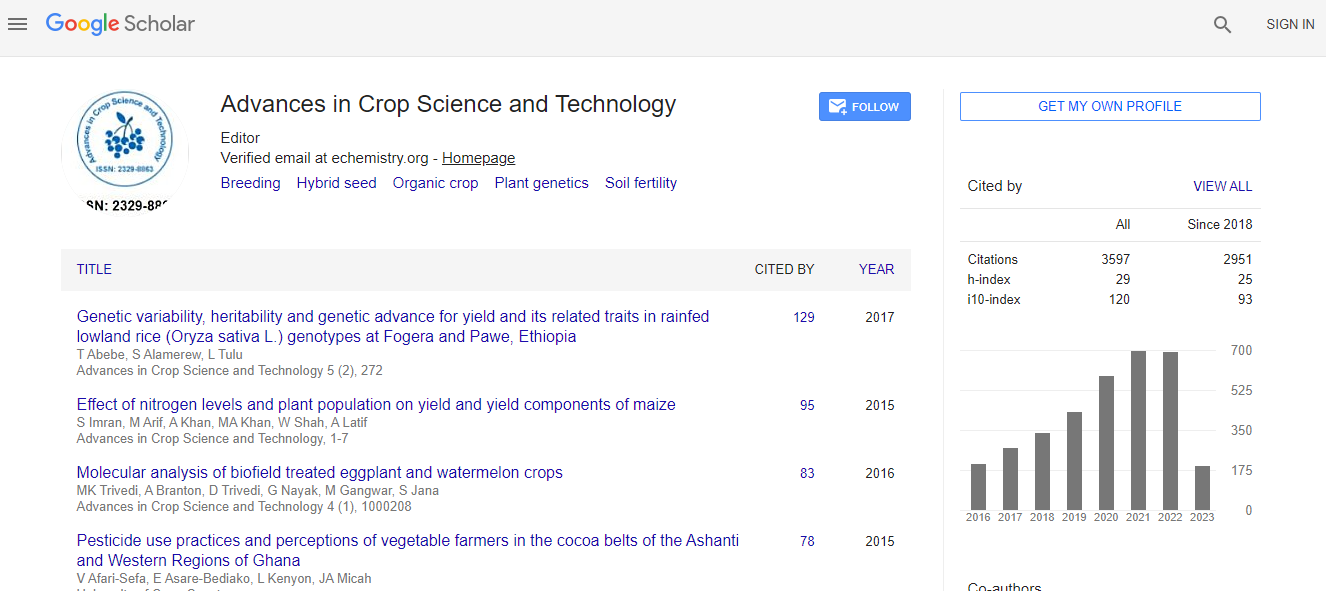Transforming Urban Landscapes: The Future of Vertical Farming in Sustainable Food Production
*Corresponding Author: Motunrayo Etim, Department of Agricultural Economics and Extension Services, Faculty of Agriculture, Kwara State, Nigeria, Email: MotunryaoEtima@gmail.comReceived Date: Nov 04, 2024 / Published Date: Nov 29, 2024
Citation: Motunrayo E (2024) Transforming Urban Landscapes: The Future of Vertical Farming in Sustainable Food Production. Adv Crop Sci Tech 12: 762.
Copyright: © 2024 Motunrayo E. This is an open-access article distributed under the terms of the Creative Commons Attribution License, which permits unrestricted use, distribution, and reproduction in any medium, provided the original author and source are credited.
Abstract
Urban landscapes are rapidly evolving in response to the challenges posed by population growth, climate change, and the need for sustainable food production. Vertical farming, a method of growing crops in stacked layers or vertically inclined surfaces, offers a promising solution to these issues. By integrating this innovative agricultural model into urban settings, cities can reduce their dependency on traditional farming methods, minimize transportation costs, and address food security concerns. This paper explores the potential of vertical farming as a key component in transforming urban landscapes, focusing on its role in sustainable food production. The discussion includes the technological advancements, environmental benefits, and economic considerations associated with vertical farming. Additionally, the paper examines policy frameworks and social acceptance as essential factors in ensuring the widespread adoption of vertical farming in urban areas. As cities continue to grow and the demand for food increases, vertical farming presents a scalable, resource-efficient solution to urban agriculture that aligns with sustainability goals

 Spanish
Spanish  Chinese
Chinese  Russian
Russian  German
German  French
French  Japanese
Japanese  Portuguese
Portuguese  Hindi
Hindi 
